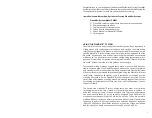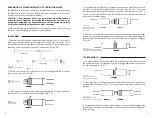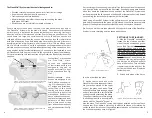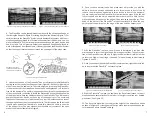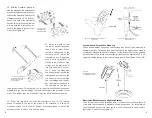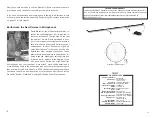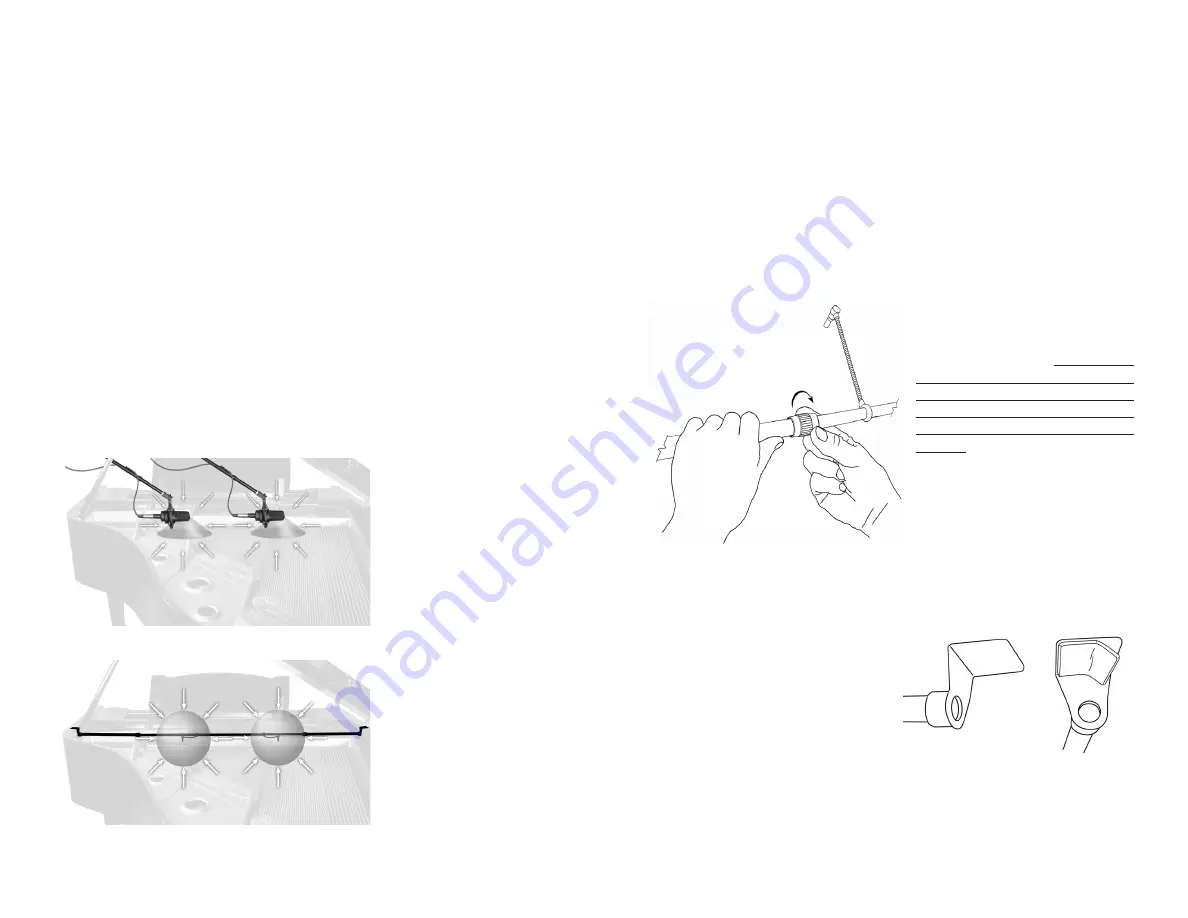
The PianoMic™ System provides the following benefits:
• Excellent overall piano sound with uniform level from all strings
• Superb sound with the piano lid up or down
• Tremendous gain before feedback
• Minimal leakage from other instruments surrounding the piano
(with piano lid closed)
• Microphones are not visible from outside the piano
People are astonished when they hear the exceptional sound quality of
the PianoMic
™
System with the piano lid closed. Conventional microphones
perform poorly in a piano as the sound inside the piano is coming from every
direction and from multiple sound sources. Every string is a sound source. The
sound board is a large and complex sound source. In addition, sounds are
reflected off the piano sides, the sound board and the piano lid multiple times
with little attenuation. Sounds inside a piano are randomly arriving from every
possible direction at similar levels, all at the same time. This is a classic exam-
ple of a “diffuse sound field” which is defined as a confined area where there are
multiple sound sources and multiple reflections arriving at the microphone from
every angle at similar levels simultaneously. A microphone that is placed in such
a diffuse sound field has to pickup all of the sound with a proper tonal balance.
For optimum results, this task requires a High Definition Random-Incidence Mi-
crophone.
Conventional microphones
are “Free Field” micro-
phones, and regardless
of their pickup pattern are
designed to only pick up
sounds accurately in front
of the microphone
(See Fig-
ure 2).
Random-incidence micro-
phones are designed to uni-
formly pick up sounds arriv-
ing simultaneously from
all angles and directions,
rather than to the sound
coming only from a primary
source that is in front of the
microphone. Random-inci-
dence microphones have ex-
ceptional accuracy and tonal
balance in a diffuse sound
field, where sound arrives
from all directions randomly
and simultaneously
(See Fig-
ure 3).
4
Figure 3. Random Incidence Microphones inside a piano pick
up sound accurately from all directions
Figure 2. Conventional “Free Field” Microphones inside a piano
only pick up sound accurately in front of the microphone
Any recording or live sound engineer will tell you that conventional microphones
do a poor job inside a piano with the lid closed. Sound engineers were amazed
when they heard the exceptional sound quality of the PianoMic™ System used
inside a piano with the lid open and at half-stick. But they were absolutely floored
upon hearing the fantastic performance with the lid closed.
When using a PianoMic
™
System for live performance you will achieve the most
gain before feedback with the piano lid fully closed. You will also have the least
amount of leakage from sounds outside the piano with the piano lid closed.
We know you will be more than pleased with the performance of the PianoMic
™
System for both recording and live sound applications.
SETTING UP THE PIANOMIC
1. With the PianoMic
™
assembled,
loosen the two clutches on either
side of the two microphone goose-
necks (See Figure 4).
When adjust-
ing the clutches, be sure to hold the
larger diameter tube section with
one hand while rotating the clutch
with the other hand as indicated in
figure 4.
However, do not loosen the
clutches all the way; just enough so
the bar can be extended and still
have a little friction. This will make
it easier to adjust the length of the
bar from both ends once it is placed
inside the piano.
2. Extend both sides of the bar so
that it is wider than the piano.
3. Notice that on each end of the
PianoMic
™
bar there are support brack-
ets that will be placed on the upper
edge of the piano case sides. These
support brackets have rounded edges
and are covered with a soft Polyolefin
coating to avoid scratching the piano.
The support brackets are thin enough
to allow the piano lid to be completely
closed with the PianoMic
™
System in-
side the piano. The PianoMic
™
comes with felt pads installed on the top of each
support arm. If you desire a more snug fit with the lid closed or if vibration be-
comes an issue, install one of the enclosed spare felt pads on the bottom side of
the support brackets as shown in Figure 5.
5
Figure 4. Loosening the Clutches
Figure 5. Support Arms and Installing Felt Pads
Summary of Contents for PM40T
Page 8: ...Notes 12...


